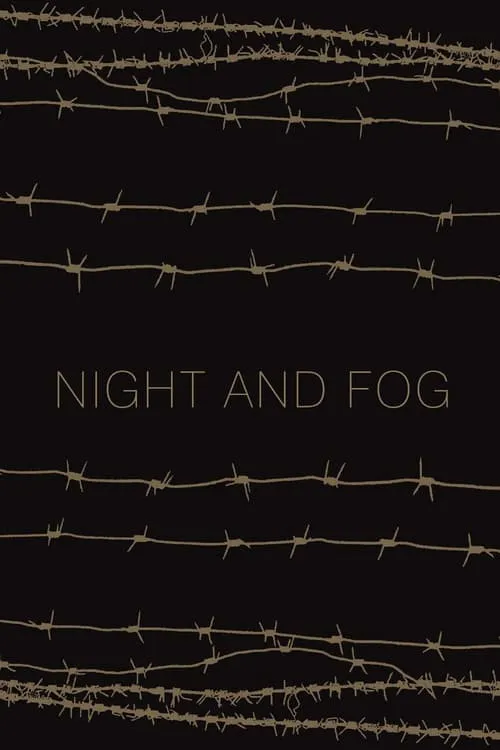Night and Fog

Plot
In "Night and Fog," Alain Resnais masterfully crafts a poignant and unflinching documentary that delves into the dark recesses of humanity's capacity for evil. Filmed in 1955, this landmark film is a searing indictment of the atrocities perpetrated by the Nazis during World War II. The movie's unassuming title belies the visceral impact of the cinematic experience, as Resnais takes viewers on a haunting journey through the remnants of Hitler's concentration camps. The film begins with a juxtaposition of two vastly different worlds. The serene and tranquil landscapes of occupied France, where the film was shot, serve as a stark contrast to the desolate and nightmarish environments of the concentration camps. Resnais's deliberate juxtaposition of these two settings emphasizes the disconnect between the idyllic lives of those who perpetrated the atrocities and the unimaginable horror that unfolded within the camps. As the film progresses, Resnais's narrative shifts from a broader examination of the Nazi regime's machinations to a more intimate exploration of the lives of those within the camps. We see crumbling barrack blocks, overgrown gardens, and the rusting hulks of gas chambers, each serving as a testament to the regime's calculated and systematic approach to exterminating entire populations. The film's power lies in its stark and unvarnished portrayal of the camps, which has a profoundly disorienting effect on the viewer. Resnais's camera lingers on the remnants of the victims' lives, capturing the faint echoes of humanity in a place where it seemed to have been extinguished entirely. We see the makeshift family structures, the meager belongings, and the desperate attempts at preserving some semblance of dignity in the face of unimaginable brutality. Resnais is unflinching in his presentation of the atrocities, choosing to focus on the tangible evidence of the camps rather than dramatizing the experiences of the victims. The footage is haunting, not solely because of the sheer horror of the events depicted, but also because of the way it speaks to a deeper, more existential fear. We see the remnants of lives torn apart, the artifacts of a humanity reduced to a mere number, and the calculated, clinical approach to dehumanization that defined the Nazi regime. One of the most striking aspects of "Night and Fog" is its use of time. Resnais's decision to juxtapose footage from the camps with scenes from contemporary France serves as a powerful reminder of the fleeting nature of time and the resilience of human memory. Even as the camps themselves crumble into ruin, the ghosts of those who suffered within them continue to haunt the landscape. Throughout the film, Resnais's voiceover provides a sparse and measured commentary, offering a context to the events we are witnessing. His words are imbued with a sense of sorrow, but also a deep sense of outrage, as if the sheer magnitude of the atrocities has left him momentarily speechless. This measured tone serves to reinforce the sense of disorientation and confusion that pervades the film. "Night and Fog" is often regarded as a key work in the French New Wave movement, but it is a categorization that feels somewhat at odds with the film's purpose. This is a documentary that transcends the boundaries of cinematic language, existing on a visceral, almost primal level that defies categorization. It is a testament to the enduring power of Resnais's vision that "Night and Fog" remains a profoundly unsettling experience, capable of disturbing even the most jaded viewer. As the credits roll, we are left with a haunting sense of disorientation, a feeling that we have been forever changed by the events we have witnessed. "Night and Fog" is a film that refuses to be forgotten, standing as a stark reminder of the dangers of hate and the importance of preserving our collective memory. It is a testament to the enduring power of cinema to shape our understanding of the world, and a powerful rebuke to those who would seek to erase the evidence of past atrocities.
Reviews
Recommendations




